

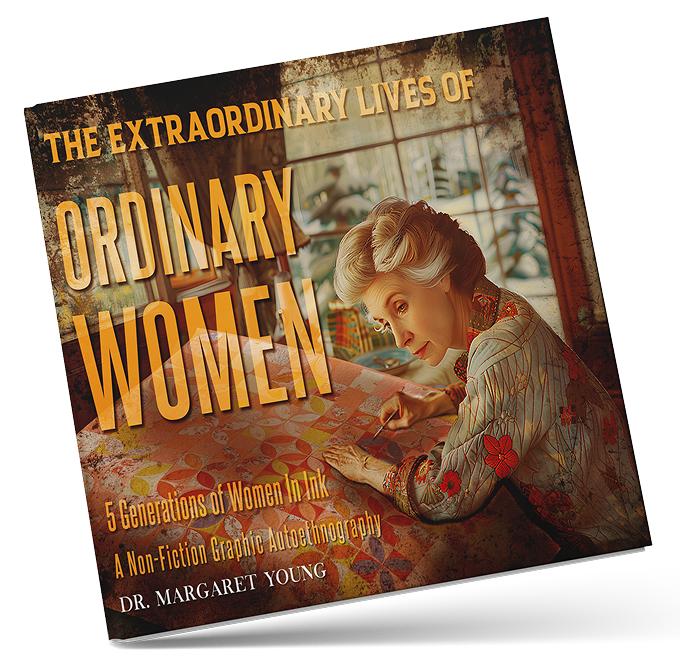
The Extraordinary Lives of Ordinary Women: Five Generations in Ink is what happens when family history meets a time machine, a magnifying glass, and a very sharp pen. Part memoir, part detective story, and part love letter to the women who came before us, this graphic auto-ethnography dives head first into drawers full of letters, diaries, talismans, and well-loved objects that have survived wars, migrations, and more than one child with scissors.
Spanning five generations of women—teachers, immigrants, dreamers, farmwives, and one chronic note-maker—Margaret L. Young unpacks what’s been handed down through mitochondrial DNA, family recipes, wartime whispers, and broken brooches. These aren’t queens or celebrities; they’re the women who kept the world turning while no one was looking—and who left breadcrumbs in the form of quilts, cookbooks, and scribbled notes in margins.
The seven threads that pieced together the The fabric of the Family and this book.
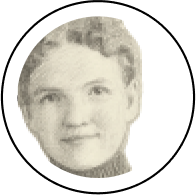
1867-1943
Margaret Jane Parlette Woolery McConnell (b. 1847)—( The matriarch. A frontier survivor with a Recipe/Cregiving book in her hand and tenacity in her bones. Virtually orphaned at 9 days old, endlessly resourceful, and armed with quilts, prayer, and sharp instincts, she laid the foundation—one handmade stitch and quiet act of resilience at a time.
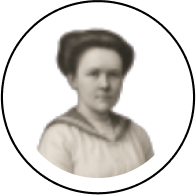
1890 -1947
A peripheral part of this story, Alma, was a dedicated horsewoman and hard worker. She found solace in her family and her four daughters and one son after being widowed young.
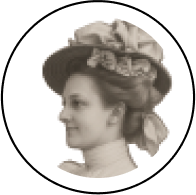
18 92–1976
Bertha Margaret McConnell Conley—A herbalist and naturalist/nurse who archived life’s details with the precision of a historian and the heart of a daughter. Bertha kept a scrapbook and a diary—gluing down what mattered before anyone else realized it did. Through wars, moves, and motherhood, she curated a legacy one paper scrap at a time.
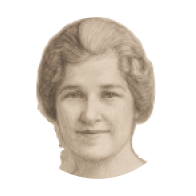
1897–1987
Connected by DNA, but not mtDNA, Sara Laurene South, ten years younger than Bertha— An influencer, college educated to become a teacher and she became the youngest teacher in Warren County, Illinois. She really wanted to go into business but her father said no to that and also to nursing. By in her middle age she was considered an authority on playing the commodities market to the point that farmers would ask her how to vote on pertinent issues. Her wit and social prominence adds to the development of the next generation. Her legacy is one of order, values, and deep thought along with wizardry in the kitchen.

Margaret Jane Parlette Wolary McConnell was the Matriarch—a frontier survivor with a caregiving cookbook in her hand and tenacity stitched into her bones. Virtually orphaned at just nine days old, she grew endlessly resourceful—armed with quilts for warmth, prayer for courage, and instincts sharper than the prairie wind. She made a life out of scraps and grace, building it a little at a time. Every stew she stirred, every fever she cooled, every baby she rocked under a patchwork quilt became part of her legacy. She didn’t just leave behind recipes—she left the knowledge of how to survive with dignity, grit, and love.
Read More
Alma Rachel spoke the language of care with a teacher’s precision and a mother’s instinct. She was fluent in reading folded towels and handwritten notes, and knew exactly when someone needed a snack—or a hug. Her home was a haven of steadiness, where scraped knees, broken hearts, and wild dreams were all met with the same calm devotion. Widowed young, Alma found solace and strength in her five children—four daughters and one son—and in the rhythmic grace of horseback riding. A dedicated horsewoman and unrelenting worker, she stitched resilience into her daily life, even when sorrow knocked at the door. Though sometimes a peripheral figure in the louder chapters of the family story, Alma was its quiet center—holding everything together not with grand declarations, but with gentleness, grit, and the kind of everyday love that endures long after the chores are done.
Read More
Bertha Margaret McConnell Conley was a diary-keeper, button-saver, and collector of family moments. Born in Montana to pioneer transplants, she grew up in a household steeped in books, pressed flowers, and careful grammar—tools she would wield as a naturalist, nurse, and writer. Part herbalist, part historian, Bertha archived life’s details with the precision of a scholar and the tenderness of a daughter. She kept a scrapbook and a diary, gluing down what mattered long before anyone else realized it did. Newspaper clippings, family lore, recipes, pressed leaves, and thoughts penciled in—all became artifacts in her care. Behind her meticulous handwriting and orderly margins lived an inquisitive soul who relished stories: of people, of plants, of places passed through and never quite left behind. Through wars, relocations, and the quiet triumphs and sadness of motherhood, she curated a legacy one paper scrap at a time. Her life wasn’t loud, but it echoed—softly, steadily—through the things she chose to remember.
Read More
Sara Laurene had a grandmother’s touch that felt like both a lullaby and a life lesson. With warm meals, sharp wit, and a steady supply of stories, advice, and cookies—each delivered with equal precision—she nurtured her grandchildren into capable, curious adults. Connected by family DNA but not by mtDNA, she was ten years younger than Bertha and carved her own distinct path. College-educated and determined, Laurene became the youngest teacher in Warren County, Illinois. She had dreamed of going into business—or perhaps nursing—but her father vetoed both. Still, she didn’t just pivot— she soared. By middle age, she had become an authority on the commodities market, dispensing stock tips between batches of cookies. Local farmers came to her not only for recipes but also for advice on how to navigate complex economic issues. Laurene’s kitchen was a place of magic, yes—but so was her mind. Her legacy is one of order, values, and deep thought, stitched together with a kind of quiet wizardry that turned everyday moments into master classes in strength, love, and practical brilliance.
Read More
1867-1943
The matriarch. A frontier survivor with a recipe / caregiving book in her hand and tenacity in her bones.
Read More

1890-1947
A peripheral part of the story, Alma was a dedicated horse woman and a hard worker.
Read More

1892-1976
A herbalist and naturalist / nurse who archived life's details with the precision of a historian and the heart of a daughter.
Read More

1897-1984
She was an influencer. Not connected by MtDNA, she wanted to go into business, but her father said no, so she became a teacher.
Read More
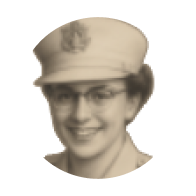
1917–1951
Bright, and fleeting—was her light. Born between the wars, served in the US Army Air Corps. She nursed young man returning home with grievous wounds seen and unseen. She married a young wounded bombardier pilot and was the mother of two small children when she was felled by a mosquito. She left behind diaries letters and loved ones who never recovered.
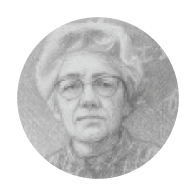
1919–1995
ellye Rose Conley. A teacher, dedicated aunt, daughter, and grammarian with flair. She knew the value of education, well-ironed skirts, and second chances. She filled her home with books, opinion, and emergency cookies—passing along a love of learning and a talent for resilience disguised as charm and was always there.
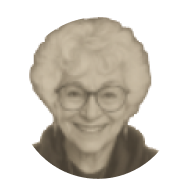
1948
Margaret Young, Ph.D., is a Professor Emeritus of Communication whose career spans broadcasting, journalism, design, and archival deep-dives into 19th-century ephemera. An award-winning writer and lifelong story excavator, she focuses on the resilience of ordinary women and the generational wisdom tucked into diaries, sock drawers, and stubborn streaks. She believes the smallest stories often carry the biggest truths—and maybe a little rebellion.
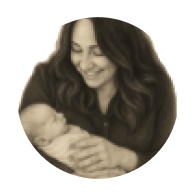
1989
The legacy in motion. Dassie brings warmth, wit, and wisdom to every room she enters. A healer, nurturer, and fierce advocate, she bridges past and present. She mothers sons, cultivates beauty, and carries the family line forward with fire and care. The next leaf. The quiet promise of a new story beginning. Born into a library of women’s lives, Dassie carries both their name and their strength. Her chapter is still unfolding, but the roots beneath her are centuries deep.

Bright and fleeting was her light. Born between two world wars, she served in the U.S. Army Air Corps, nursing young men who came home carrying wounds both visible and invisible. One of them—a wounded bombardier pilot—became her husband. She was the mother of two small children when she was felled by a mosquito, a tragic end that came far too soon. Though her life was short, Margaret left more than memories. Her diaries, scrapbooks, and notes show a woman full of curiosity, quick wit, and joy that shines even in the margins. She didn’t live long enough to share every shade of her voice, but what remains still speaks loud and clear.
Read More
Nell Conley was the sister who filled the gap, whose strength ran like a seam through the generations. Born in the Swan River Valley of Canada during that brief lull between the world wars—when peace paused to powder its nose and society adjusted its hemline—she came of age in a world that demanded resilience, and she delivered it with quiet grace. She was not the kind to seek center stage, but her presence was foundational. A devoted daughter, sister, aunt, and caretaker, Nell tended to her aging parents and helped raise her niece and nephew with steadfast love. Hers was the kind of devotion that never asked for thanks but changed lives all the same. A hard worker and lifelong learner, she found purpose in daily tasks and solace in family. She may have appeared as a peripheral character in the more dramatic chapters. Still, Nell was the fine stitching that held the narrative together—a woman of deep loyalty, dignity, and quiet, enduring strength.
Read More
Margaret Laurene Young is the dream-keeper and record-breaker of her lineage—a weaver of memory and imagination who turned family history into living art. Born in a swirl of flannel, feminism, and folklore, she grew up surrounded by the stories of the women who came before her—and never quite stopped listening. A Professor Emeritus of Communication, her career spans broadcasting, journalism, design, anthropology, and archival research, with a deep dive into 19th-century ephemera. An award-winning writer and lifelong story excavator, Margaret focuses on the resilience of ordinary women and the generational wisdom tucked into diaries, sock drawers, and stubborn streaks. She believes the smallest stories often carry the biggest truths—and maybe a little rebellion. Her work—equal parts memoir, ethnography, and love letter—brings to light the textures of lineage and the quiet power of stories passed down through teacups, toolboxes, and time. Her legacy is one of deep thought, gentle care, and the belief that the past isn’t lost—it’s simply waiting to be heard.
Read More
The legacy in motion. Dassie brings warmth, wit, and wisdom to every room she enters. A healer, nurturer, and fierce advocate, she mothers sons, cultivates beauty, and carries the family line forward with fire and care. Born into a library of women’s lives, she carries both their name and their strength—along with her own unmistakable spark. Though she may be the final chapter I’m writing, she is far from the end of the tale. With a toolkit full of grit, grace, and creative flair, Dassie is poised to take the dance in a direction all her own. Her chapter is still unfolding, but the roots beneath her run centuries deep. She is the next leaf. The quiet promise of a new story beginning. And I have no doubt: what comes next will be bold, brilliant, and beautifully hers.
Read More
1917-1951
Bright and fleeting was her light. Born between the wars, served in the US Army Air Corps. She nursed young men returning home with grievous wounds seen and unseen.
Read More

1919-1995
A teacher, dedicated aunt, daughter and grammarian with flair. She knew the value of education, well ironed skirts and second chances.
Read More

1948-Present
She is a Professor Emeritus of Communication whose career spans broadcasting, journalism, design, and archival deep-dives into 19th century ephemera. She believes the smallest stories often carry the biggest truths - and maybe a little rebellion.

1989-Present
The legacy in motion. She brings warmth, wit, and wisdom to every room she enters. Born into a library of women's lives, Dassie carries both their name and their strength. Her chapter is still unfolding.
Read More

The Matriarch Jenny was born on a Monday in 1867—fair of face, just as the old nursery rhyme promised. She came into the world during a time of shifting tides for women, when movements for rights, roles, and reforms were slowly reshaping the social landscape. Though a woman born that year could expect a lifespan of just 40 to 50 years, Jenny surpassed expectations, living to 76. Her life was shaped not only by the limitations of her era, but by the quiet resilience and longevity that marked the women of her generation.

Bertha Margaret was a diary-keeper, button-saver, and collector of quiet revolutions. Born in Montana to pioneer transplants, she grew up in a household steeped in books and careful grammar, which she put to good use as a naturalist, nurse and writer. But beneath her meticulous exterior lived a deeply curious soul who relished family lore, newspaper clippings, and anything typed in Courier. Her scrapbook was both

Alma Rachel spoke the language of care with a teacher’s precision and a mother’s instinct. She was fluent in folded towels, hand-written notes, and the exact timing of when someone needed a snack—or a hug. Her home was a haven of steadiness, where scraped knees, broken hearts, and big dreams were all treated with the same loving attention. Despite tragedy and personal loss, Alma quietly held her family together, nourishing not just bodies, but the emotional seams of the family story.
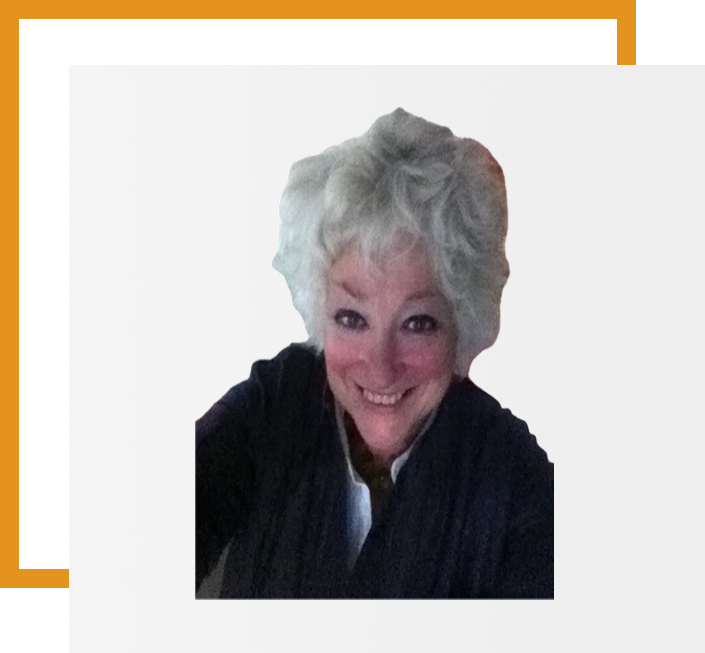
“I consider myself a Collaborator with the women I write about.”
Margaret Young, Ph.D., is a Professor Emeritus in the Department of Communication at Bradley University. With a career stitched together from more than thirty years of radio talent, acting, journalism, advertising, public relations, and the occasional academic brawl over the Oxford comma, she’s as comfortable in front of a crowd as she is buried in 19th-century archives. An award-winning designer and writer, Dr. Young has co-authored three books, published many articles, and filled more journals than a Victorian schoolgirl with a fountain pen.
Her trophy shelf includes more than a dozen honors from the Illinois Women’s Press Association and the National Women’s Press Association.
What is Autoethnography:
References
Ellis, C., Adams, T.E., & Bochner, A.P. (2011). Autoethnography: An Overview. Forum: Qualitative Social Research, 12(1). https://doi.org/10.17169/fqs-12.1.1589
Holman Jones, S. (2005). Autoethnography: Making the Personal Political. In N. Denzin & Y Lincoln (Eds.) Handbook of Qualitative Research (3rd ed., pp 763-791). Sage Publications.
Spry, T. (2001). Performing Autoethnography: An Embodied Methodological Praxis. Qualitative Inquiry, 7(6), 706-732. https://doi.org/10.1177/107780040100700605
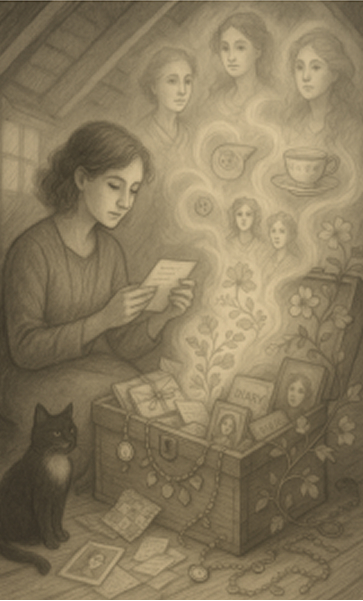
Who is Wendy? Wendy is the one you want in your corner when the world tilts sideways. A steady hand, a clear thinker, and a woman with both backbone and a bottomless well of compassion, she brings order to chaos with a grace that looks effortless (though we know it’s anything but).Wendy is not unlike J.M. Barrie. She’s my best friend and my collaborator—precision with a purpose and an ally in a strange world. Together, we’ve sorted through life’s messes—literal and otherwise—hatched more schemes than I can count, and built the kind of shorthand that only comes from years of trust, late-night phone calls, and finishing each other’s sentences.She’s the one who remembers everyone’s birthday without needing a Facebook reminder, shows up with soup and sass when you’re under the weather, and somehow keeps the whole circus of daily life running—with her sense of humor not only intact, but weaponized. Practical, loyal, and quietly fierce, Wendy is the kind of person who shows up—again and again—not for applause, but because it’s simply who she is.Whether she’s nurturing people, projects, or plants, Wendy has a gift for growth. Her wisdom is earned, her wit is sharp, and her love shows up in the details: a handwritten note, a carefully chosen gift, a perfectly timed reality check.In a family full of storytellers and strong women, Wendy is both—equal parts heart and anchor. She is proof that you don’t have to shout to be powerful, and you don’t need a spotlight to leave a legacy.In short, Wendy is the living, breathing definition of an extraordinary life lived by an ordinary woman—a quiet force who reminds the rest of us what grace, grit, and goodness look like.
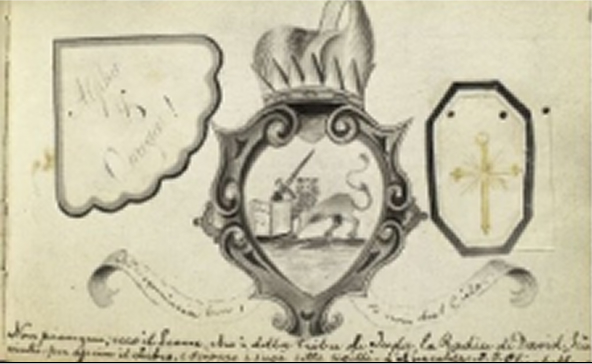
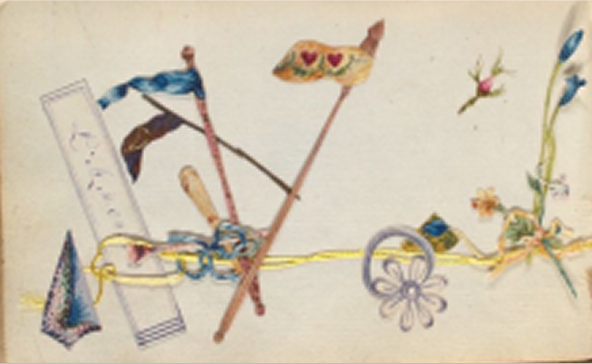
Scrapbooking is many things—a hobby, a time machine, a glorified glue-stick gala. At its heart, it’s a way to preserve the mess and magic of personal and family history, typically stuffed into the likes of a book, a box, or, for the overachievers among us, a card that unfolds like a paper magician’s trick. It often involves photos, scribbled notes, ticket stubs, questionable napkin sketches, pressed daisies, and enough glitter to alarm most vacuum cleaners. Journaling, doodling, and lovingly curated chaos are part of the package. But this isn’t a newfangled craft. Oh no. If you think this all began with Pinterest, let’s hop in our metaphorical DeLorean and head back to the 15th century.
In 15th-century England, clever folks kept commonplace books—essentially intellectual junk drawers where they jotted down recipes, quotes, letters, poems, and other things they didn’t want to forget (or misplace under the bed). Each one was a reflection of its owner’s obsessions and oddities. By the 16th century, friendship albums blossomed onto the scene—think: proto-yearbooks where your friends would inscribe a witty line, a doodle, or perhaps a cheeky Latin phrase, all upon request.
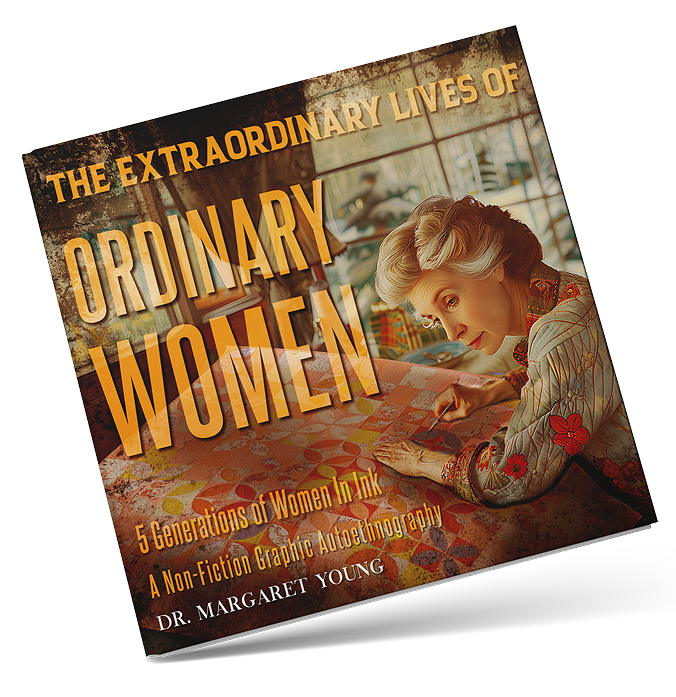
12834 Cheverly Drive
704-575-0917
©Copyright 2025 MARGARET YOUNG. All Rights Reserved.